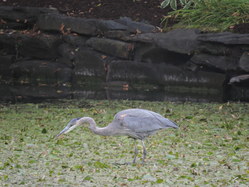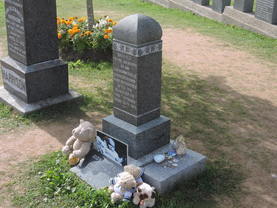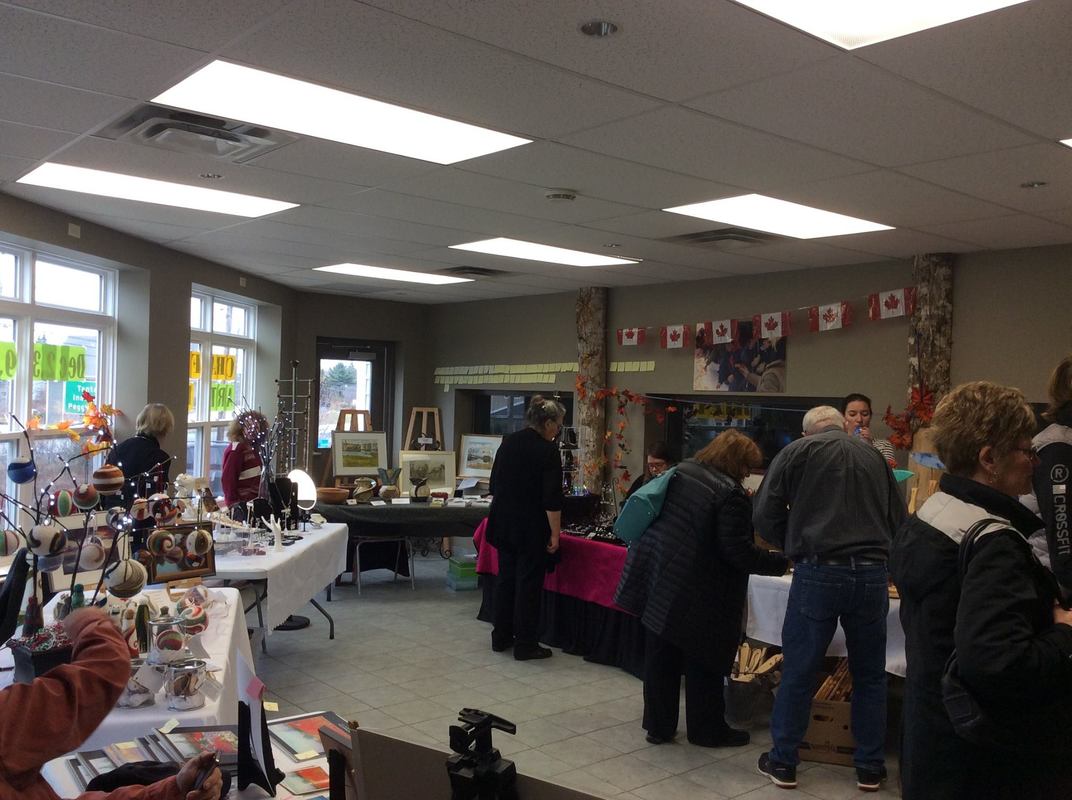Autumn sea, the ship proceeds
Toward Nova Scotia.
Garry picked us up at beautiful Halifax harbor, populated with scores of cormorants and sea gulls in brisk, bright autumn weather. He provided context for our visit with a brief history lesson. The city was founded in 1749 by Edward Cornwallis, nephew of General Cornwallis of the American Revolutionary War. The area was first populated by the native Mi’kmaq people who befriended the French fur traders who arrived before Cornwallis. The province’s name, which means “New Scotland” in Latin, suggests the nationality, religion and language of the immigrants who arrived after the younger Cornwallis hired mercenaries to eradicate the Mi’kmaq people. From the ashes of this act of ethnocentric cruelty, a modern city emerged.
Halifax today is a lovely city of 400,000 people with five universities, several hospitals, charming Victorian houses, a gorgeous Victorian public garden and a cemetery where many of those who perished on the Titanic were buried.
Garry then drove us to Halifax’s most famous historic site, the Citadel, a British fortification high on a hill above the harbor. First established in 1749 by Cornwallis, the Citadel was added to in subsequent decades to protect the city during various military actions, including the Seven Years’ War with the French, the American Revolutionary war, and the War of 1812. In 1803, the imposing Town Clock was constructed on the eastern slope of Citadel Hill and keeps time for the city of Halifax today.
It was a moving experience to visit Fairview Lawn Cemetery, where more than 100 of the passengers of the tragic 1912 sinking of the Titanic are buried. When the Titanic sank, ships from Halifax were sent to the area of the wreckage to assist with rescue efforts, but instead found dozens of bodies of those who perished still floating on the sea. The city of Halifax accepted the responsibility of burying all the bodies that their ships retrieved. Over the years, efforts to identify these victims have continued, although forty-two remain unidentified. Our guide Garry was very knowledgeable about the lives and families of many of the individuals who now rest at Fairview Lawn. Burying the dead with dignity is one of the marks of civilized behavior, and I was touched by the efforts of the people of Halifax not only to provide memorial services and burials, but to offer consolation to the families and perpetual care of their loved ones’ graves.
While Halifax is an architectural gem, the nearby coastal fishing villages have a natural charm that no visitor to Nova Scotia should miss.
Ancient stones overlooking
The wild Atlantic.
At Rhubarb, we ate our very first lobster rolls, and they were everything we dreamed they would be. The rolls were very fresh fat rectangles, toasted and buttered, and the lobster filling, piled on top, was divine. It consisted of huge chunks of fresh lobster with small pieces of chopped celery and green onion bound together with mayonnaise with a small serving of coleslaw on the side. We gilded the lily by ordering steaming bowls of fish chowder to eat with our lobster rolls. The soup was brimming with big chunks of haddock, salmon, more lobster and clams in the shell. We topped this memorable meal off with pieces of very moist rhubarb cake, almost like bread pudding, with vanilla ice cream.
At Acadian Maple Products, I also discovered Mrs. MacGregor’s Canadian Maple Shortbread Cookies, which I mailed to Kathleen, my niece and co-author of myteaplanner.com, for Thanksgiving, and was delighted that they received her seal of approval. Mrs. MacGregor’s Shortbreads (www.mrsmacgregors.com, (902) 382-1878) are baked in Pictou, Nova Scotia, and are also available from their lovely website. In addition to Canadian Maple, Mrs. MacGregor’s also offers Lavender and Lemon and Chocolate Shortbread as well as Oat Cakes, Sweet Trays with assorted cookie treats, Wedding Cakes and all sorts of other Scottish-inspired desserts, including Sticky Toffee Pudding. The staff at Acadian Maple Products was extremely gracious and friendly in helping us to make our selections. The shop even has a mini maple museum with interesting photographs of the maple syrup harvesting process. The maple products sold in the shop contain syrup harvested in the nearby forests of Nova Scotia.
We will remember Nova Scotia as a very traditional place filled with lovely gardens, striking architecture, exquisite natural landscapes and polite and welcoming people. To keep these memories alive, I am happy to share the recipe for Maple Shortbread Cookies. These would be perfect in any season to serve at Afternoon Tea, or since we celebrate Valentine’s Day in February, you can make them in heart shapes with a cookie cutter and even tint them pink and sprinkle some red or pink sugar crystals on top, though to be truthful, Maple Shortbread Cookies need no decoration. For even more ideas for Valentine’s Day treats this year, we recommend The Valentine’s Day Tea in the February calendar section of myteaplanner.com.
Shortbread cookies are easy to make, and good recipes abound on line and in cook books. Traditionally, this Scottish classic contains only three ingredients—butter, sugar and flour. Our own website, myteaplanner.com, contains numerous Shortbread recipes, from Kona Coffee Shortbread to Black Sesame Shortbread to Chocolate Shortbread Petticoat Tails to Shortbread Shamrock Cookies. It is easy to find Maple Shortbread recipes on other websites. King Arthur Flour has an excellent recipe for Maple Shortbread using pure maple sugar. Here I share a very simple recipe adapted from allrecipes.com that calls for maple syrup rather than maple sugar. I cannot guarantee that these Shortbread Cookies will be as good and Mrs. MacGregor’s, but I think you will enjoy them.
1 cup (2 sticks) unsalted butter, at room temperature
½ cup pure maple syrup
2 cups all-purpose flour
¼ teaspoon salt
demerara sugar for sprinkling (optional)
Preheat oven to 350°F
Special equipment: large mixing bowl, hand held electric mixer, rubber spatula, medium sized mixing bowl, sieve or flour sifter, large cookie sheet, parchment paper, offset spatula, wire rack
Makes: about 2 dozen cookies
- Sift the flour and salt together in a medium sized mixing bowl and set aside.
- In a large mixing bowl, beat the butter and maple syrup together with an electric mixer until smooth. Add the flour mixture and beat just until incorporated.
- Form the dough into walnut sized balls and place them on a parchment-lined baking sheet. Flatten gently with an offset spatula and sprinkle the tops with demerara sugar if desired.
- Bake 10-12 minutes until lightly browned. Cool on a wire rack. Serve immediately or store in an air-tight container between sheets of waxed paper at room temperature.

















 RSS Feed
RSS Feed